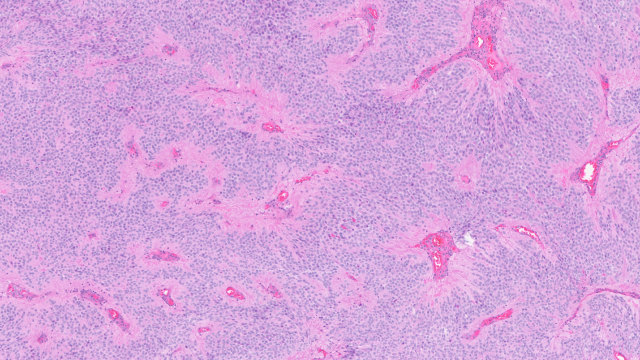
Data from thousands of compounds and nearly 200 cancer cell lines screened at the National Center for Advancing Translational Sciences are available online through a new CellMiner database. Image credit: Pommier lab
A new database developed by CCR scientists links extensive drug activity data from the National Center for Advancing Translational Sciences (NCATS) to detailed molecular information about the cancer cell lines in which those drugs have been tested. The database, called CellMinerCDB: NCATS, expands a set of CellMiner tools that have been freely available since 2009 through CCR’s Genomics and Pharmacology Facility. It was described in Cancer Research on May 4, 2023.
The new database details how 2,675 different compounds affect the growth of cancer cells. It includes drug response data from 183 cancer cell lines that have been tested at NCATS.
By linking that drug activity data to genomic and other molecular data from other institutes, CellMinerCDB: NCATS enables researchers to easily explore relationships between cancer cells’ molecular makeup and their response to potential therapies. Understanding how molecular features influence cancer cells’ response to therapy facilitates drug discovery and is critical for identifying the best treatments for individual patients.
“The cross-database enables anyone to make all the connections about any drug they're interested in,” says Developmental Therapeutics Branch Chief Yves Pommier, M.D., Ph.D., who led the development of both CellMinerCDB: NCATS and its predecessor, CellMinerCDB.
The first CellMiner database, whose developers included Pommier and John Weinstein, M.D., Ph.D., a former CCR Investigator who is now at the University of Texas MD Anderson Cancer Center, debuted in 2009. It drew together activity data for thousands of drugs that had been tested in the 60 cancer cell lines known as the NCI-60 and made those data easily searchable.
In 2018, the tool became more powerful when Pommier and colleagues linked the NCI-60 data to databases from the Broad Institute, the Wellcome Sanger Institute, MD Anderson Cancer Center and Massachusetts General Hospital. Together, they provided both drug responsiveness data and genomic sequences for a much larger set of cancer cell lines. The integrated databases were named CellMinerCDB (cross-database), and the free online tool was quickly adopted by the research community. CellMinerCDB includes data from more than 1,400 cell lines and 20,000 compounds. Thousands of people worldwide use it every year.
Pommier says he and his colleagues realized researchers needed a similar tool to take advantage of the extensive drug activity data that is obtained through large-scale screens at NCATS. While there is some overlap between the cell lines tested at NCATS and the cell lines represented in CellMinerCDB, the NCATS data includes 1,866 additional compounds and 72 unique cancer cell lines. Many of the NCATS cell lines are derived from rare tumor types that are not represented in other publicly available collections. Notably, CellMinerCDB: NCATS includes data for hundreds of non-oncology drugs.
“The bulk of these data are scattered across multiple publications,” says Kelli Wilson, Ph.D., Acting Director of Compound Management at NCATS and co-first author of the paper. “Having this available and easily searchable within CellMinerCDB: NCATS saves researchers valuable time and resources when seeking out information about their drug of interest and how it may or may not work in different cancer types.”
Like CellMinerCDB, this new web application links drug activity data to molecular data from the Broad and Sanger Institutes so researchers can look for correlations between them. “We wanted to give this data to the public and generate a platform that would enable anyone to look at it,” Pommier says. “Now it is at their fingertips.”


